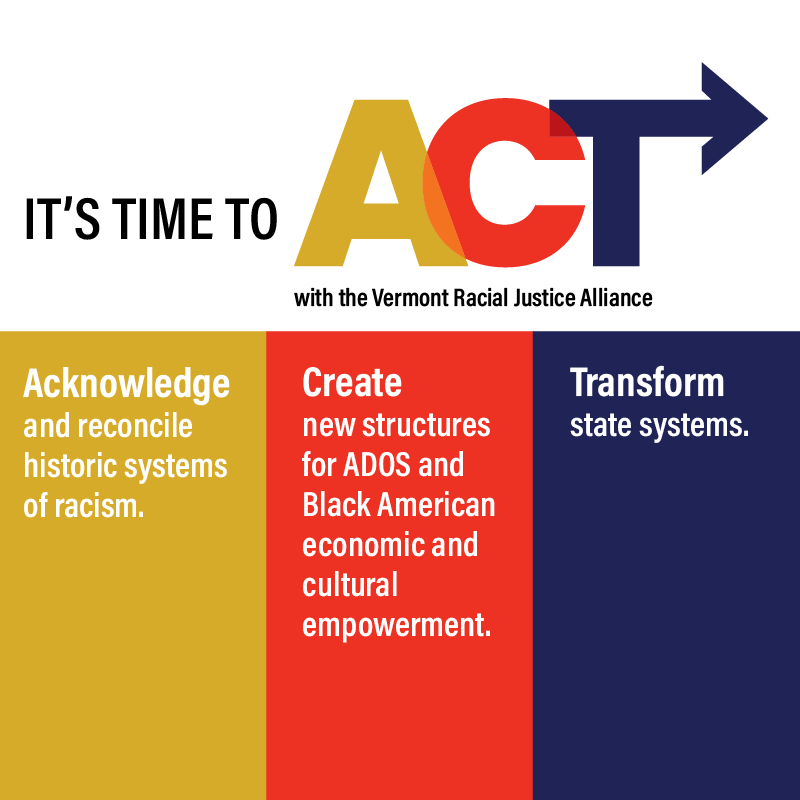Vermont’s quality of life areas in 3 V.S.A. 2311

We will provide written testimony on Vermont’s quality of life areas in 3 V.S.A. 2311 and put forward policy requesting an 11th area be added to the ten Vermont’s quality of life area. The process of a public hearing on this topic is not conducive to meaningful and productive engagement for the advancement of a topic of such importance, nor does it provide the vital context required for our community who would seek to engage. In our legislative agenda for last Biennium, we called on the legislature to add an additional area to the ten Vermont’s quality of life areas in 3 V.S.A. 2311. The existing areas are:
(1) Vermont has a prosperous economy.
(2) Vermonters are healthy.
(3) Vermont’s environment is clean and sustainable.
(4) Vermont is a safe place to live.
(5) Vermont’s families are safe, nurturing, stable, and supported.
(6) Vermont’s children and young people achieve their potential.
(7) Vermont’s elders live with dignity and in settings they prefer.
(8) Vermonters with disabilities live with dignity and in settings they prefer.(9) Vermont has open, effective, and inclusive government.(10) Vermont’s State infrastructure meets the needs of Vermonters, the economy, and the environment
(9) Vermont has open, effective, and inclusive government.
(10) Vermont’s State infrastructure meets the needs of Vermonters, the economy, and the environment
Our recommendation for the 11th area to be added was that to the effect of:
“Vermont’s Black, Indigenous and other People of Color live in safety and wellness and have equitable opportunity to thrive.
Our belief was that adopting this recommendation would have served to create a transformation that goes to the heart of our work in dismantling systemic racism in Vermont. Structuring the work in this way provides a point of aggregation for measurement for what we know to be a vitally important area of Vermont quality of life. Instead of adopting our recommendation, the legislature passed a one-time provision whereby the GAC, Executive Director of Racial Equity, Social Equity Caucus and Chief Performance Officer accept recommendations from “relevant entities” population-level indicators that demonstrate quality of life for BIPOC Vermonters that relate to the ten population-level quality of life outcomes.
The following language was added to the statute:
“Vermont’s population-level quality of life outcomes are intended to reflect the well-being of all Vermonters, and indicators reported to measure the extent to which outcomes are achieved are intended to represent the experience of all Vermonters, including and especially Vermonters who are members of marginalized groups.”
The Vermont Racial Justice Alliance was not involved in any testimony or deliberations surrounding this decision, nor was other representatives of the extended BIPOC advocacy community. We have had limited engagement post enactment of this legislation. Dispersing the population level indicators of BIPOC safety and wellness and our ability to thrive into the other 10 Vermont quality of life areas dilutes the priority and distills the much needed analysis required to make meaningful gains in eradicating systemic racism.
By statute, each year the Chief Performance Officer “submits to the General Assembly a State Outcome Report demonstrating the State’s progress reaching population-level outcomes for each area of Vermont’s quality of life by providing data for the population-level indicators.
The purpose of our request was to create an area of quality of life whereby the State’s progress in reaching the related population level outcomes could be annually measured. We believe that the State should be held accountable to this area of quality of life:
“Vermont’s Black, Indigenous and other People of Color live in safety and wellness and have equitable opportunity to thrive.
As we announced in our ACT press conference yesterday, “Our current national constitutional crisis is due to an unacknowledged, uncorrected and unresolved politically driven, racially exploitative economic system.” Systems of racial oppression and an ongoing unprecedented global pandemic place us at the epicenter of the resulting trauma like never before.” We learned from Act 54’s Attorney General’s and Human Rights Commission’s Task Force in 2017 that racial disparities in Vermont exist across all systems of State government. We know that systemic racism is real and the political process and government is the primary apparatus that created and sustains it. We will include in our A.C.T. legislative priorities language that change sto 3 V.S.A. 2311 to include an 11th area of quality of life:
“Vermont’s Black, Indigenous and other People of Color live in safety and wellness and have equitable opportunity to thrive.
It is our hope that as a result of our persistence that BIPOC members and the extended advocacy community will have an opportunity to provided testimony and otherwise engage as true stakeholders in this critically important legislative process. We brought this policy to the legislature because we believe that these areas of quality of life (as articulated in 3 V.S.A. 2311) drive our Statewide goals, our priorities and our budget. We believe that BIPOC should be centered for all of the reasons we all know and understand. We believe that process here matters more than anything. Let’s get this one right.
#ACTVermont
